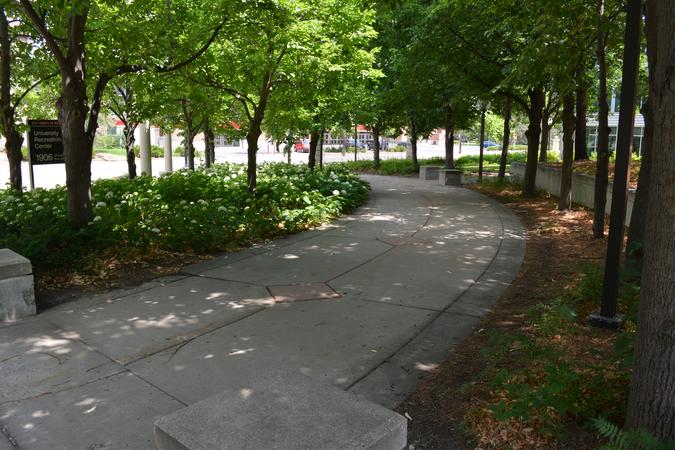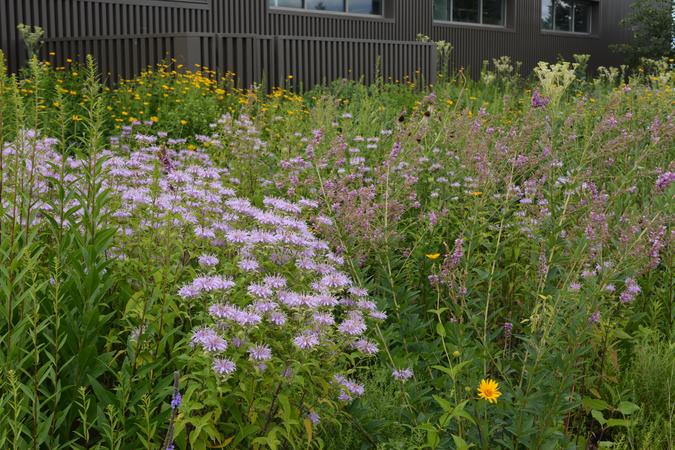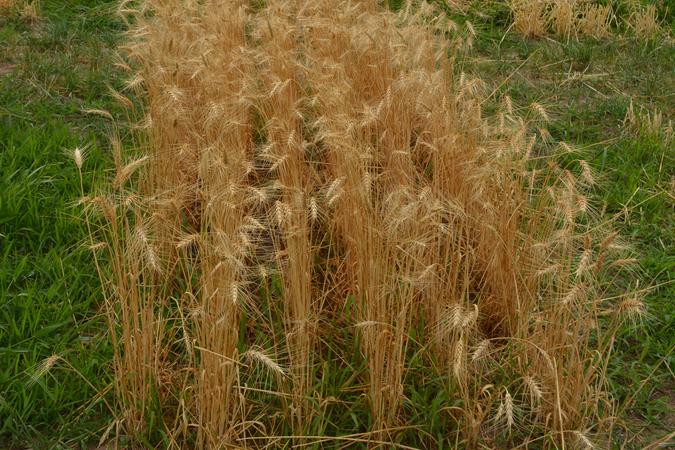
Ecologically, a plant community is a collection of plants that characteristically grow together in a particular area or environment. Examples of special and unique plant communities include:
Prairie or meadow
Prairie or meadow plant communities that provide exceptional gardens for pollinators, butterfly habitat, beautify sections of campus, and/or have a positive effect on the grounds operation (e.g., replacements for traditional turf grasses).
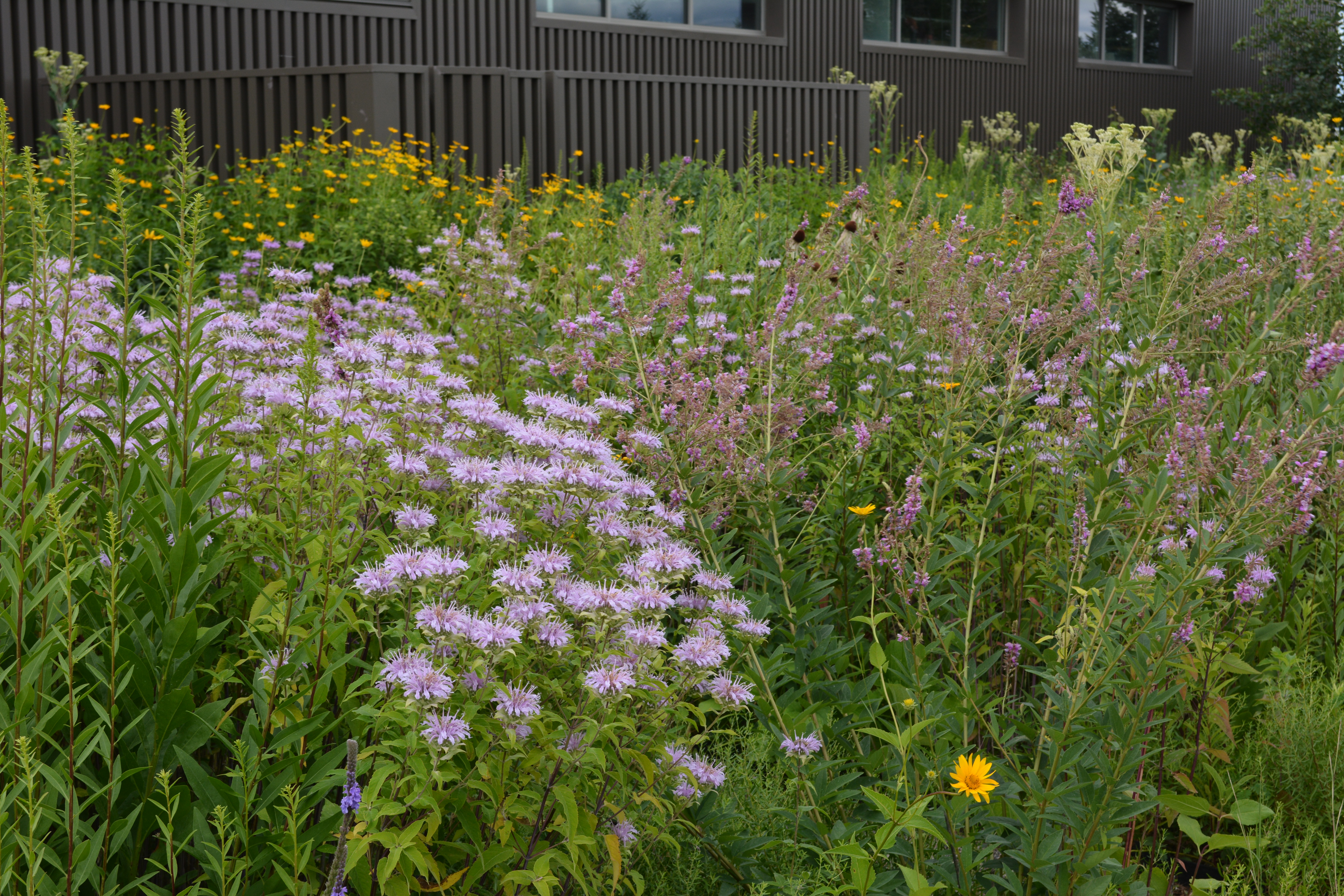
The pollinator garden at the UMN Bee Lab, Saint Paul.
Woodland or forest
Woodland or forest plant communities. These communities should contain not only the larger tree canopies that dominate and shade the areas, but the associated understory plants, such as wildflowers, ferns, and/or shade-tolerant grasses, not maintained turf grasses.
Savanna-type
Savanna-type plant communities that are more open with dominant tree canopies that touch or barely touch, complete with grasses and/or forbs as groundcovers.
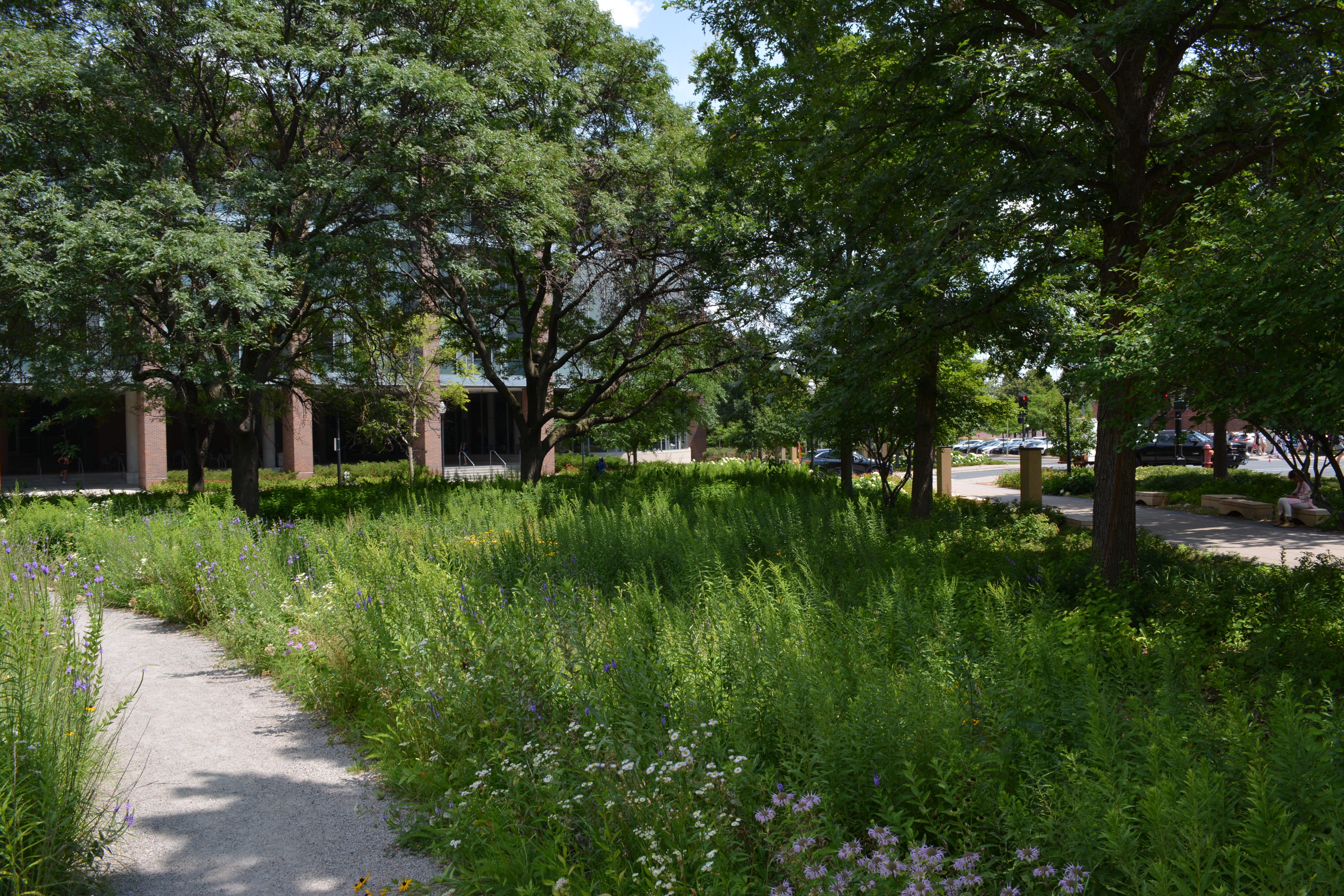
Physics Nano prairie/meadow savanna, East Bank.
Riparian
Riparian plant communities (those that occur along streams, riverbanks, or floodplains). These generally have tree canopies along with characteristic unmaintained groundcovers.
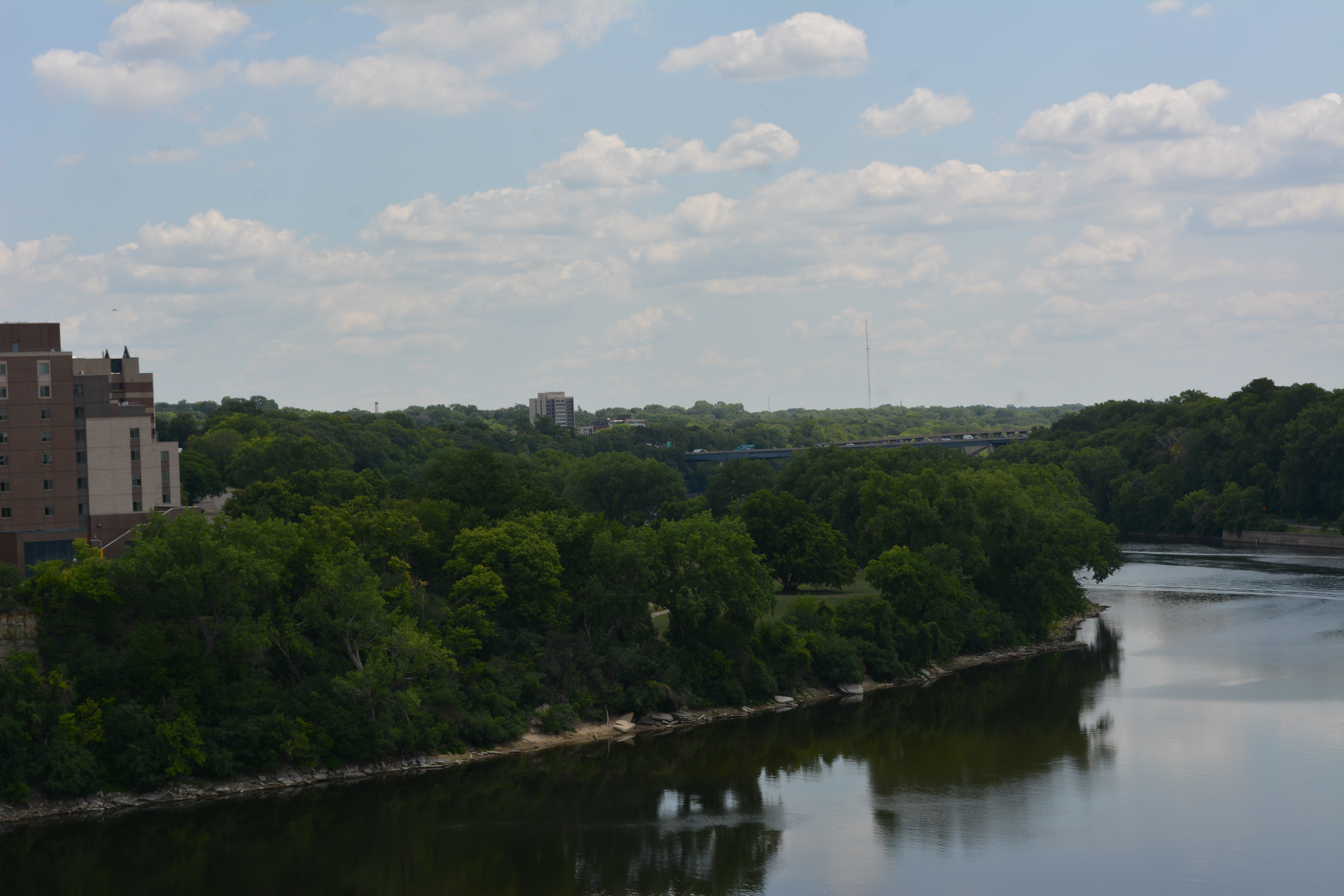
View of the Mississippi River, West Bank.
